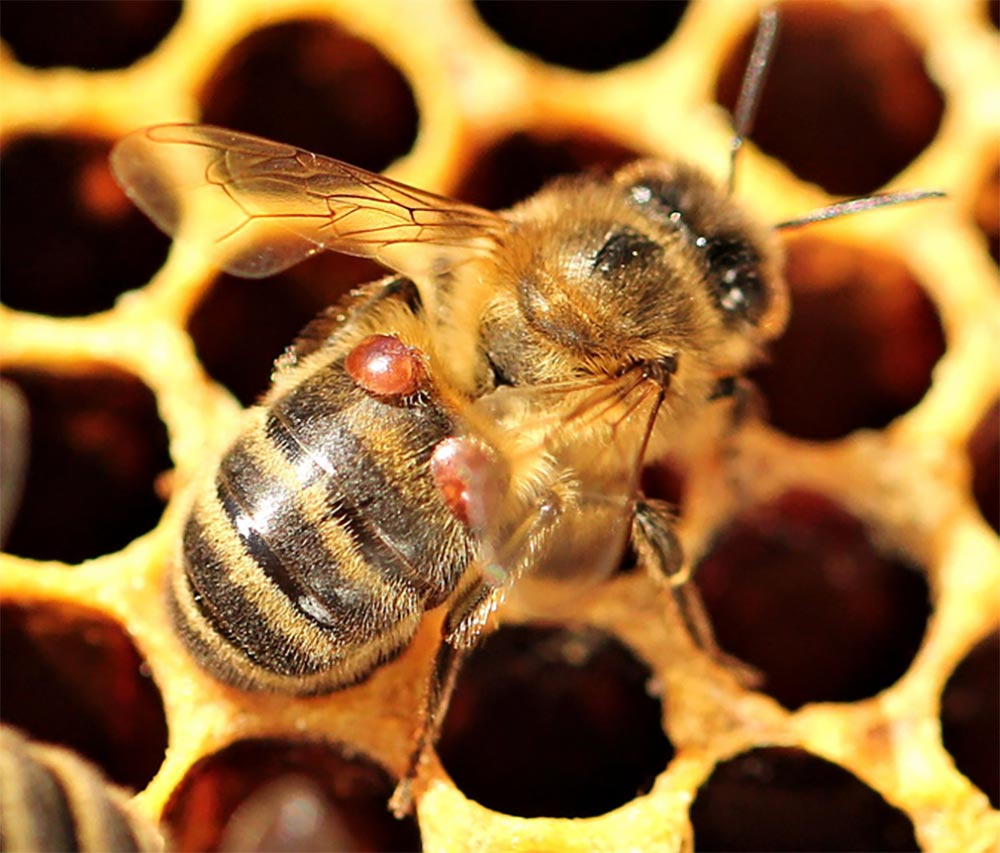Hive Beetles
Hive beetles destroy the hive ruining the honey, comb, pollen, and bee larvae. They will lay larvae in the honey, which results in the larvae tunneling through everything, eating, and destroying anything in their way.
3 common indicators of hive beetle presence:
- The hive smells of decay or fermentation. Once the beetle larva are laid, the honey begins to ferment.
- Honey bees are gathering at their front entrance, in preparation to abandon the hive. They are trying to protect their hive from the beetles.
- The colony, including the bees, and frames look greasy, or wet. (hive beetles like wet, moist areas)
It’s difficult to prevent them from entering or returning to the hive. Maintain regular inspections of the beehive, and:
- Use the beetle and mite trap tray
- Cover the ground underneath the hive stand to make it harder for the beetles to come back to the hive.
- Keep hive dry
- Use essential oils or chickens. Both have shown to be pretty effective at repelling and/or exterminating them.
- Remove all boxes with honey. The beetle larvae are typically burrowed in the honey supers so eliminating future adult beetles is the logical way to proceed.
- Hive beetles prefer wet, moist areas, so exposing your hive to sunlight, and warming it up will kill most of the beetles.
Hive beetles are most commonly seen in: California, Connecticut, Florida, Georgia, Hawaii, Iowa, Illinois, Indiana, Kansas, Louisiana, Maryland, Michigan, Minnesota, Missouri, Nebraska, New Jersey, New York, North Carolina, Ohio, Oklahoma, Pennsylvania, Rhode Island, South Carolina, Tennessee, Texas and Virginia.
Varroa Mites
Mites will attach to the bees head, or abdomen and they will start feeding on the bees blood. This makes the bee’s immune system weak and allows the bee more prone to getting other diseases. Mites also will go after the larvae which results in bees dying, and deformities.
Common indicators of varroa mite presence:
- While looking at the brood look to see reddish or brown dots on the larvae or on the back of the head of the bees. If you see any dots these could be mites.
- Look for bees that are badly deformed (EX: wings misshaped, stunted abdomens, etc)
- Without warning the hive dies in late autumn.
- Bees know when something is off with their brood they will actually uncap it when they sense mites on the larvae.
It’s difficult to prevent mites from entering or returning to the hive. Maintain regular inspections of the beehive, and:
- Use the beetle and mite trap tray
- Use a sticky trap on the screened bottom board.
If you notice varroa mites in your hive, you can eradicate them by:
- Fogging with oxalic acid. This is the best way to get rid of them fast.
- Add drone cells in one area of the hive, most mites prefer to infect drone cells. Once they move into those cells, remove the frames and put them in the freezer to kill the mites.


